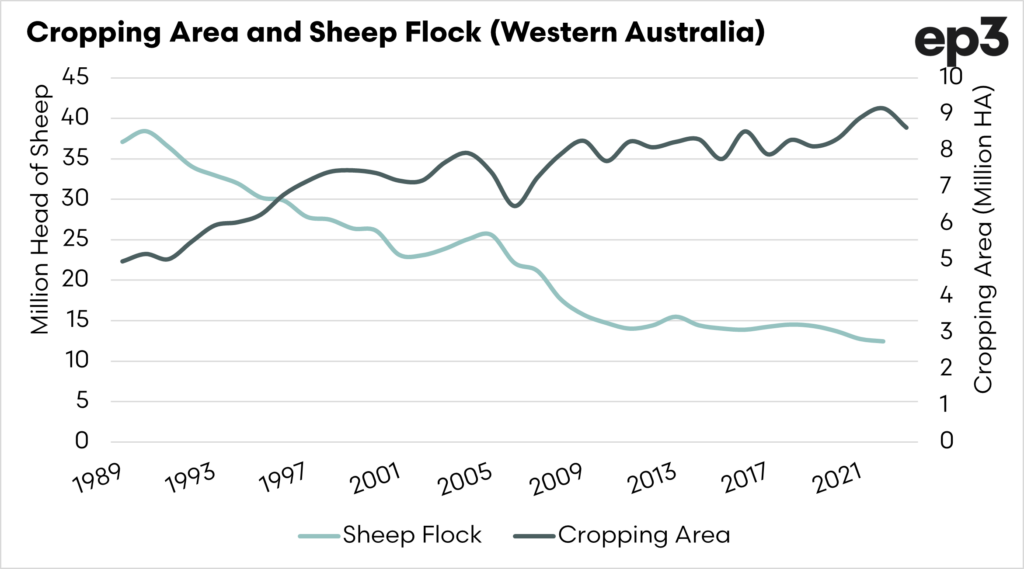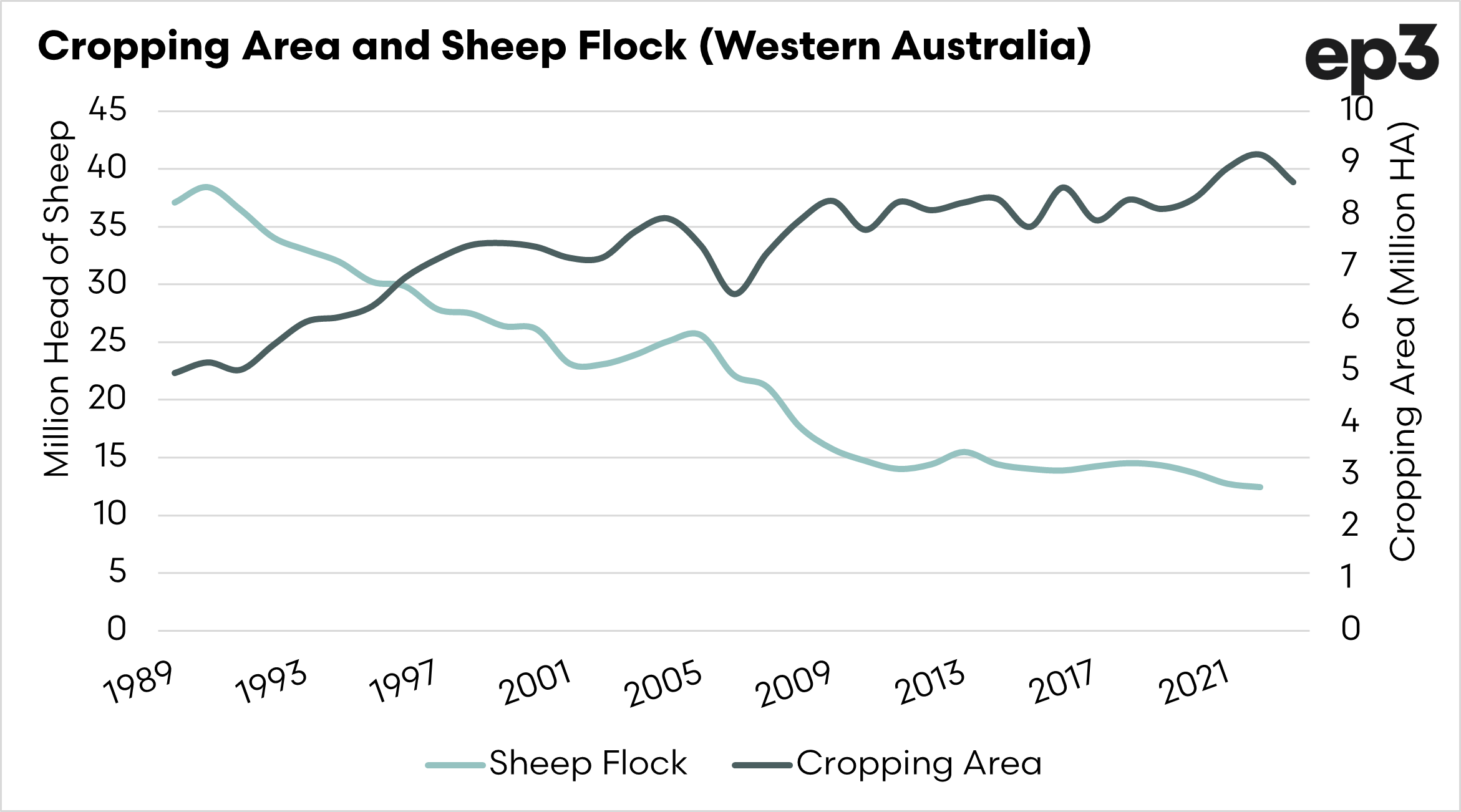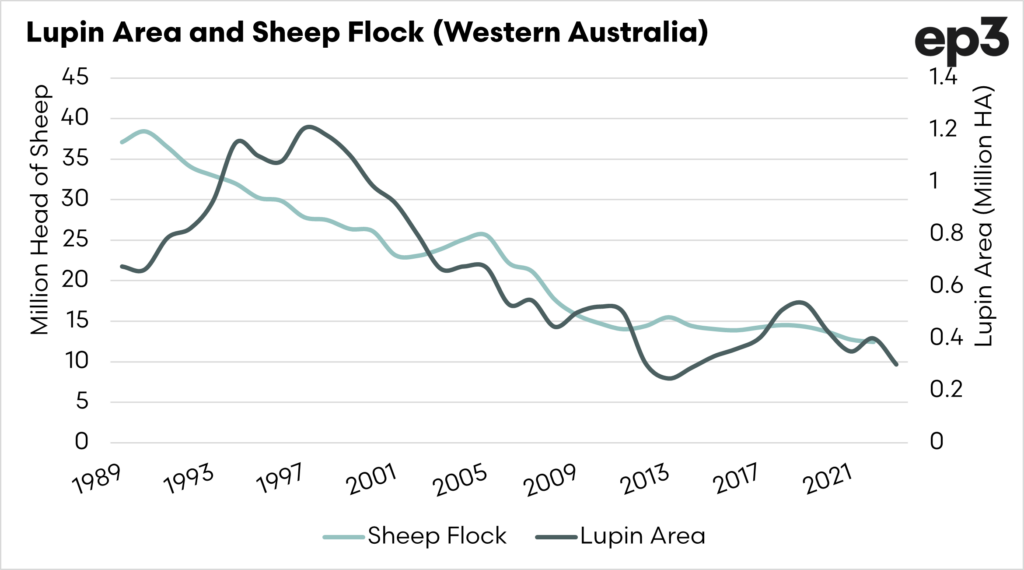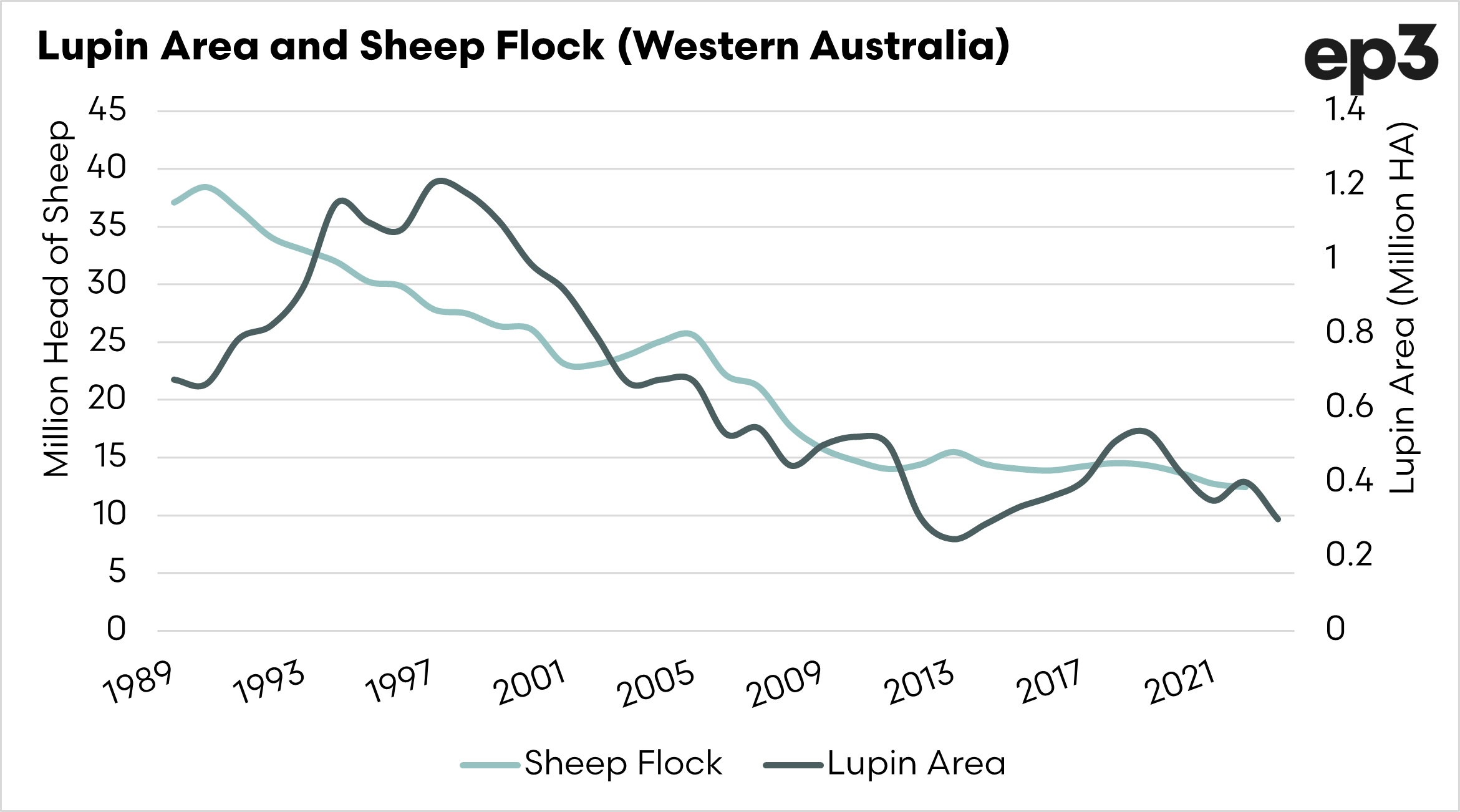Lupin in the wrong place for sheep.

Market Morsel
We have discussed it a few times, both on our podcast and in articles on this website – but the Australian flock has been declining for a long time.
Australia rode on the sheep’s back; then there was a crash in number when the wool price reserve scheme was removed. The removal of the reserve price scheme resulted in the value of sheep and wool plummeting.
When markets change, there is a tendency for enterprise shifts to occur. If you can’t make money in an industry, then you’ll shift to another operation.
In this article, I’ll be looking closely at Western Australia and the impact of enterprise shifts away from sheep – but specifically lupins.
The first chart below shows the cropping area and the number of sheep within Western Australia. There is a relationship between cropping area and sheep numbers. As sheep numbers decline, farmers plant more crops.
This is pretty obvious, as it’s the main enterprise choice that WA farmers have. Cropping, sheep or a mix.
The prior chart was the overall crop, but not all is equal. Lupins is a case in point. The lupin industry has seen a downward trend in the area devoted to them.
While there is a demand that is seemingly growing for human consumption, most demand comes from feed. This is mainly sheep and cattle, followed by pigs. In WA, a large proportion of lupins would be held on farms for supplementary feeding.
In the chart below, we can see that lupin acreage has fallen, almost in line with the fall in sheep numbers. If the sheep flock declines, without an alternative outlet for the lupins, then pricing will likely fall to reduce supply.
It’s important to note that Lupins are an important crop for nitrogen fixing and is largely the only major pulse grown within WA.




